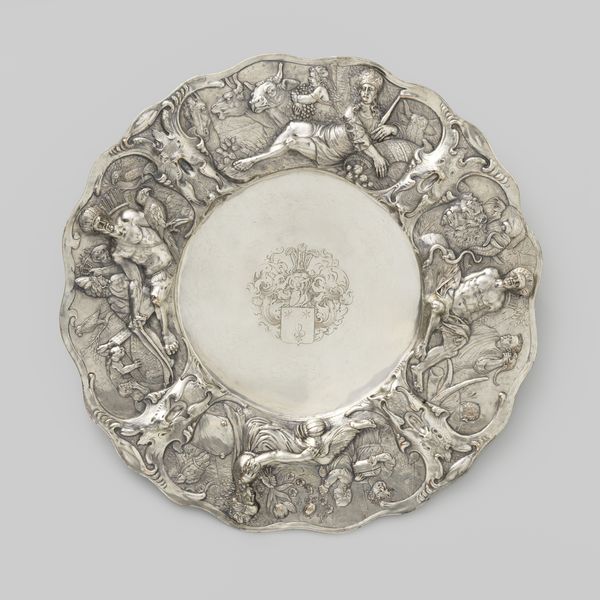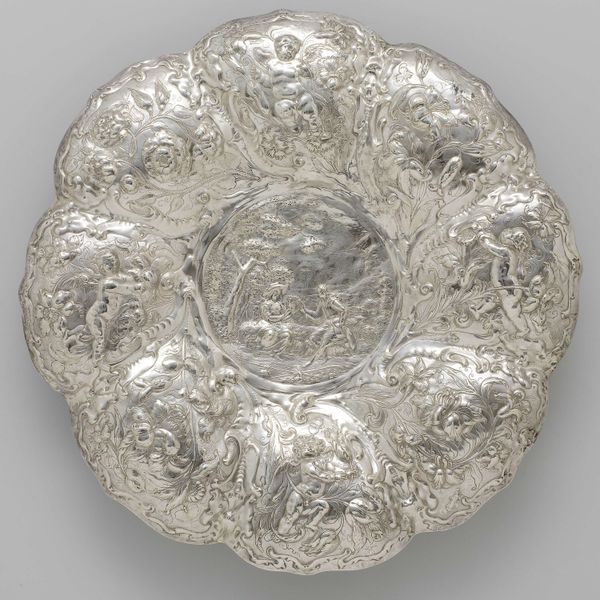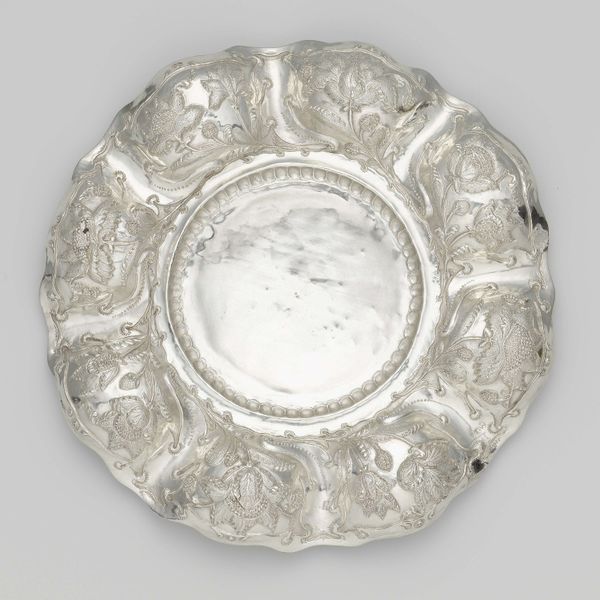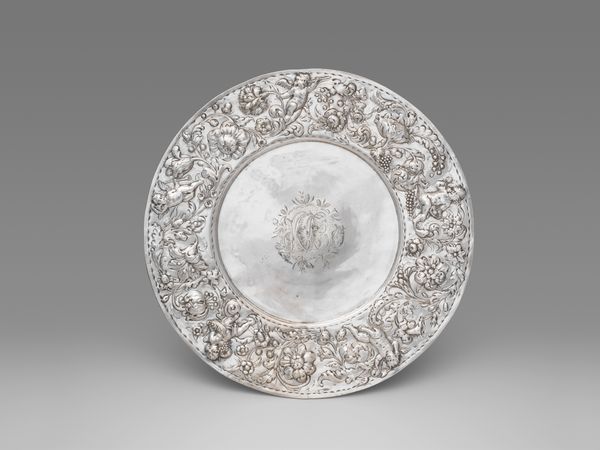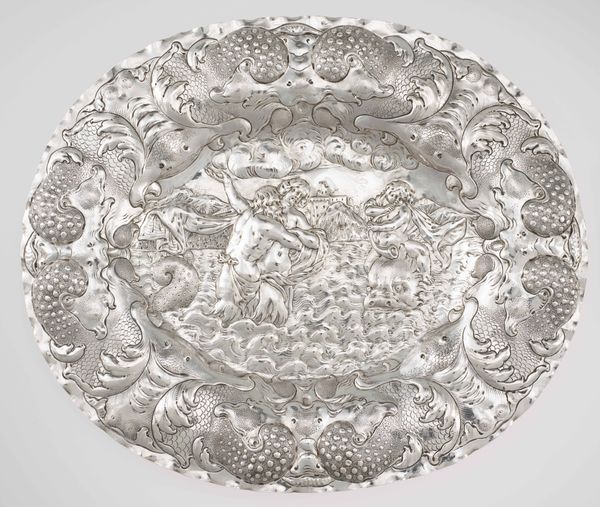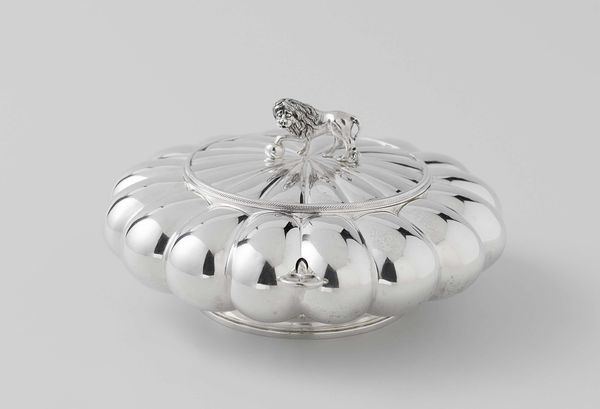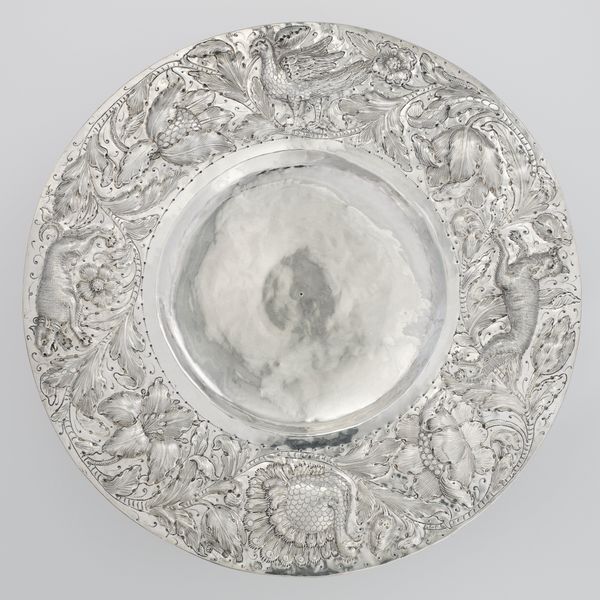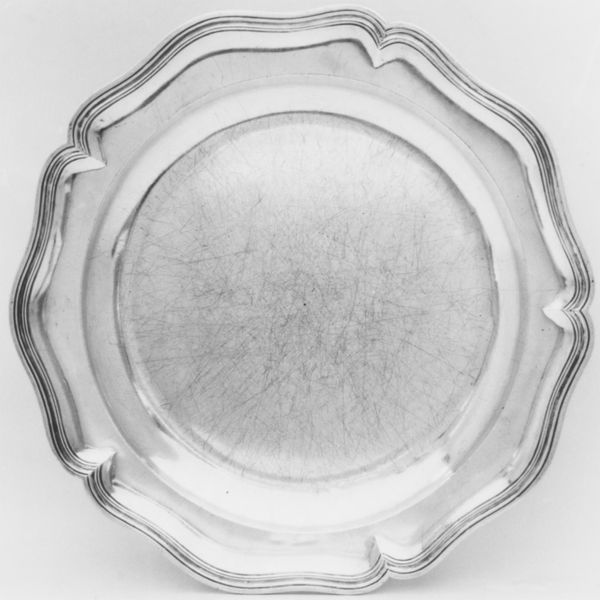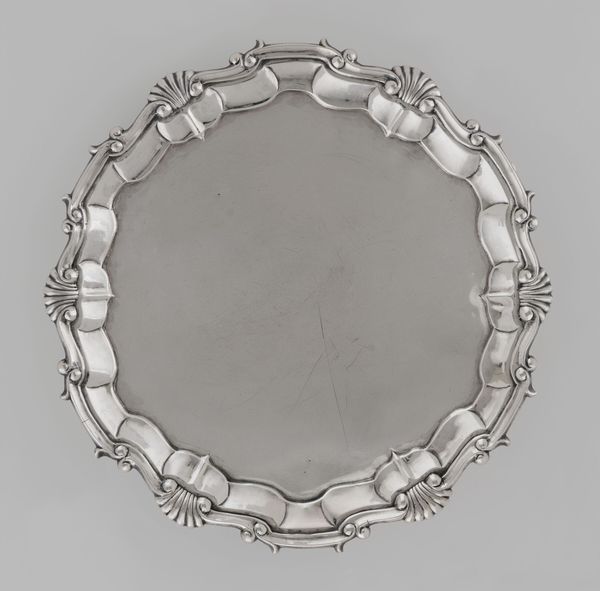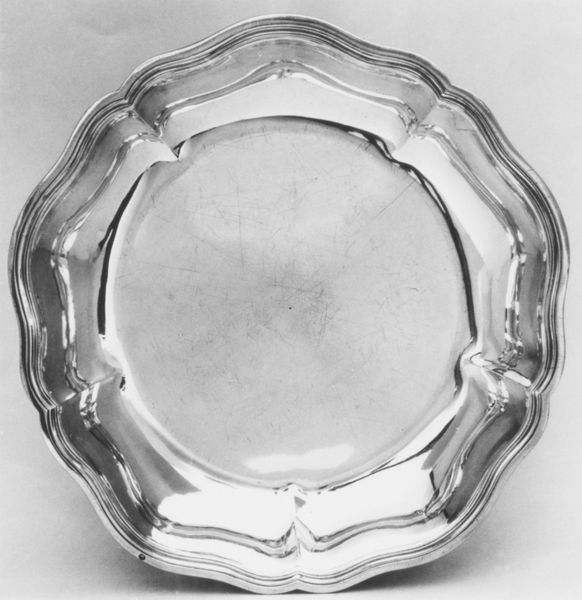
#
simple decoration style
#
ornate
#
natural stone pattern
#
circular oval feature
#
decorative element
#
egg art
#
3d printed part
#
culinary art
#
stoneware
#
ceramic
Dimensions: height 7.0 cm, diameter 43.8 cm
Copyright: Rijks Museum: Open Domain
Curator: Ah, here's a piece that always brings a smile to my face: "Schaal met vijf schelpvormige verdiepingen," or "Dish with five shell-shaped compartments," crafted in 1651 by Andries Grill. Isn't she a beaut? Editor: It’s surprisingly…serene. I expected opulence, given the period, but this polished stoneware gives off a quiet, almost meditative vibe. Like something Neptune himself might use for his hors d'oeuvres. Curator: (chuckles) Neptune's oyster platter, perhaps? These dishes were often signs of prosperity and an elevated social status back then, reflecting Amsterdam’s golden age and burgeoning global trade. Think about it; this wasn't just tableware—it was a statement! Editor: A very subtle flex, if you ask me. It is a rather delicate way of projecting prestige. But it also speaks to a shifting sensibility. The shell motifs were fashionable but tied to ideas about the natural world and exotic ports, like treasures brought home. Curator: Precisely! Grill was clearly tapping into the era's fascination with the natural world, while also catering to his clientele's desire for elegance and sophistication. Editor: How does a piece like this play within museum settings, or more broadly, today? Curator: I think a piece like this one gives a modern audience insight into how essential material goods can be to both reflecting social values, but also shaping cultural taste. The story it holds about art, nature and wealth, opens a way to contextualize culture over the longue durée. Editor: Indeed. I mean, talk about making waves, huh? A small artwork, yet brimming with insights. Curator: You've got that right! Sometimes, the most captivating stories are found in the most unexpected places.
Comments
No comments
Be the first to comment and join the conversation on the ultimate creative platform.
